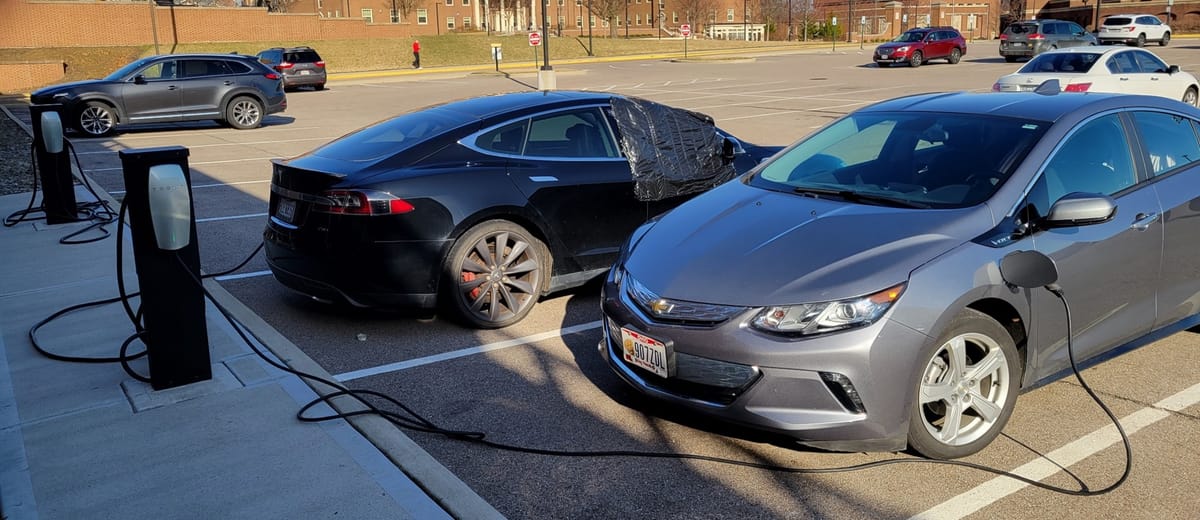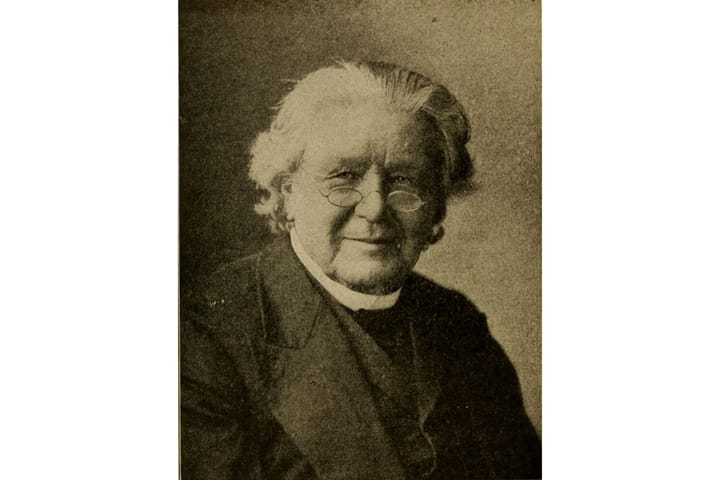EVs in Oxford: Fill ‘er up locally
Adjusting to charging an electric vehicle instead of filling up a gas one takes time, local EV drivers say.

The most crucial difference between driving a gas-powered vehicle and an electric vehicle is replenishing the source of power. Operating an EV involves changing your frame of reference for the fueling process, Kathleen Knight-Abowitz told me. She described the adjustment as “a mental shift you have to make in thinking about charging versus fueling.”
Taking an EV on a long-distance trip can be stressful, inducing what the auto industry calls “range anxiety,” the fear of running out of electricity in a remote location. More about range anxiety next time. On the other hand, an EV is more convenient to operate in Oxford in part because it can be recharged at home. Every Oxford EV driver I surveyed charges the vehicle primarily or exclusively at home. “It's amazing to 'fill up your tank' in your own house,” says David Prytherch.
Some simply plug into a 120-volt outlet in their garage. The auto industry calls this type of charging Level 1. It’s extremely slow, perhaps four to five miles of range per hour of charging, but the 20 or 30 miles of range obtained from plugging in overnight is sufficient for driving around Oxford. “[F]or as much as we drive, plugging into a 120 line when garaged is more than adequate,” Rick Momeyer said. However, most Oxford EV owners have installed Level 2 chargers, which operate at 240 volts and replenish at the rate of 10-20 miles per hour.
An EV is also convenient to drive in Oxford because public Level 2 charging stations are plentiful in Oxford, including five on the Miami campus (Chestnut Fields, Ditmer Lot, Marcum Conference Center, Millett Hall, and Pearson Lot) plus three others at McCullough-Hyde Memorial Hospital, Talawanda High School (installed by Butler Rural Electric Cooperative) and the Uptown Parking Garage. A ninth charging station is located near Hueston Woods Lodge. The nine stations together have ports to accommodate 28 vehicles.
Seven of the charging stations were obtained from ChargePoint. That company’s business model is based on manufacturing and selling the chargers. Thus, the stations are owned and operated by Miami, TriHealth and the City of Oxford. I recently plugged in at the Ditmer Lot charger and was billed at the rate of $2.50 per hour, but I paid nothing for an hour between when the battery was fully charged and when I retrieved the car. The last time I used the McCullough-Hyde charger, the cost was $1 per hour.
The Hueston Woods charging station is operated by FLO, and the Pearson Lot station is a Tesla Level 2. Until recently, Tesla operated its own charging stations, fashioned its plugs differently from other companies, and did not permit other brands to use their stations. Now, Tesla does allow other brands to use their chargers, and in turn most competitors have changed their plugs to conform to Tesla’s.
The Pearson Lot station is free. However, you’ll need to pay to use the parking lot, even if you have Miami staff parking privileges. One of my friends in his first year of teaching at Miami recently got a ticket for charging his Tesla there despite his Miami staff parking pass.
The City of Oxford and Miami University have received grants totaling nearly $2 million to install Level 3 (DC Fast Chargers) at the Church & Main parking lot, Oxford Municipal Building, and Miami University Airport (OXD). According to the Department of Transportation, these can fill up an EV battery in 20 minutes to an hour.
James Rubenstein is president of the Board of Directors for the Oxford Free Press and professor emeritus of geography at Miami University.




